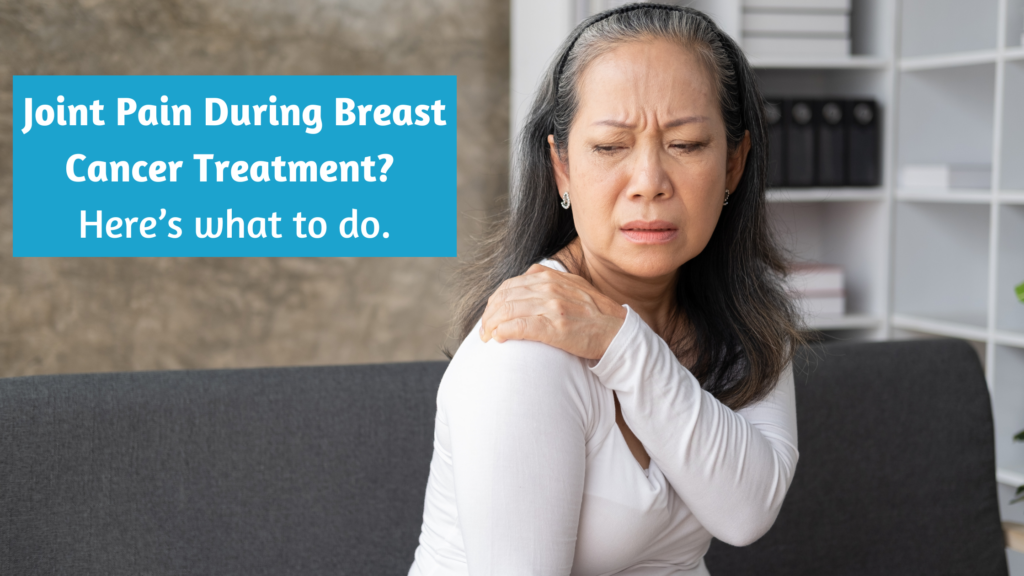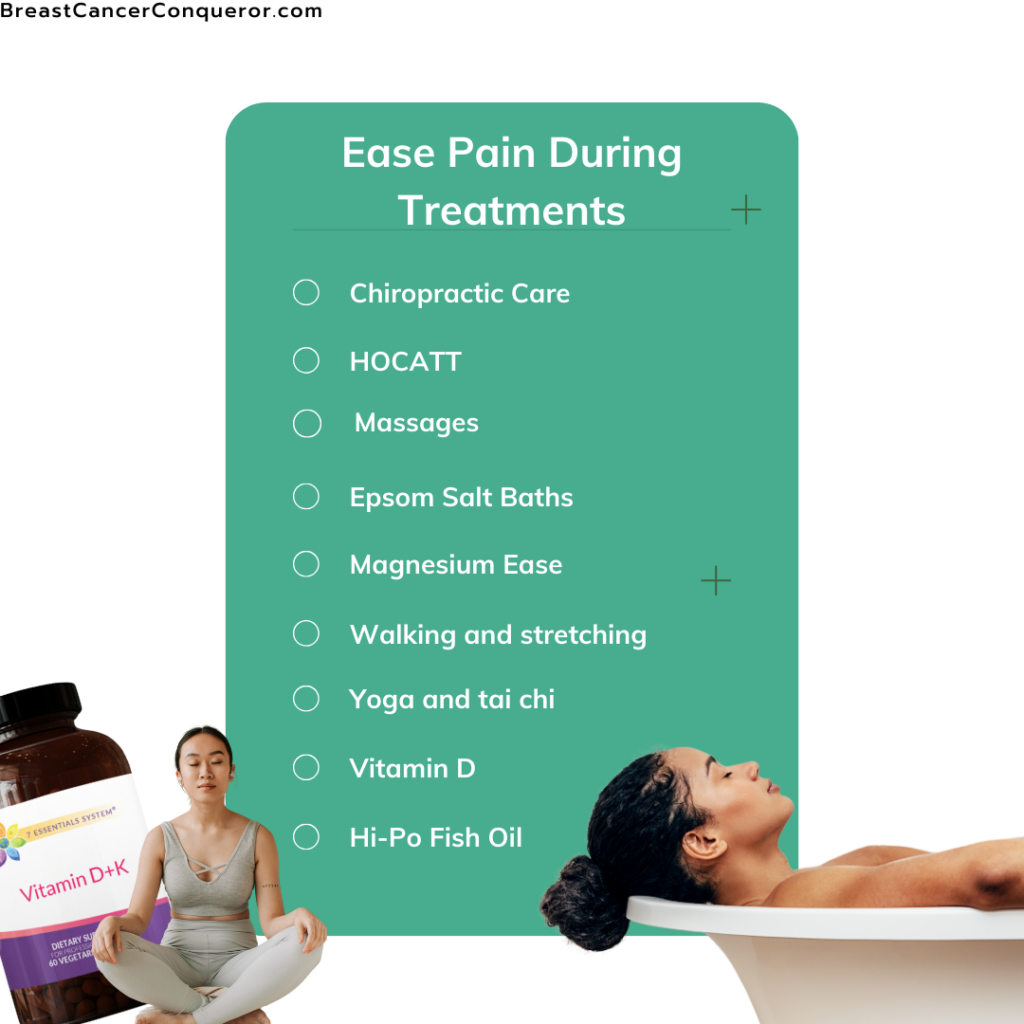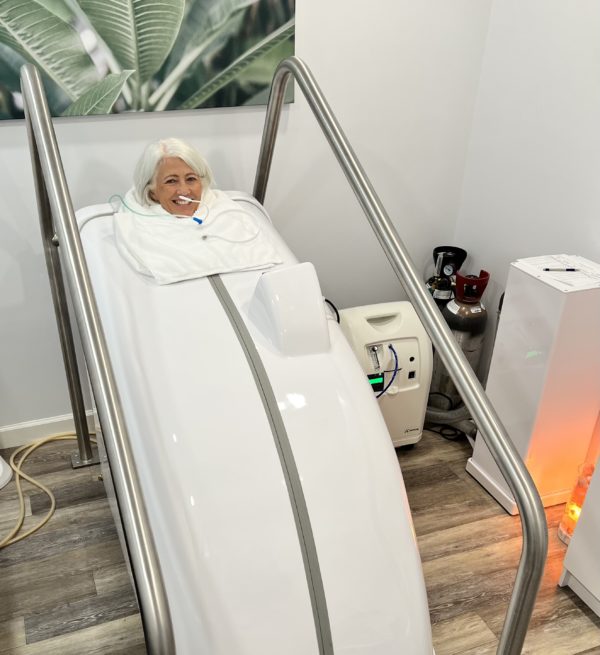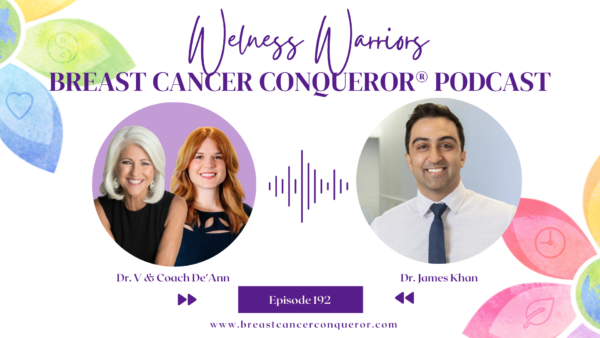
Please note: Before you start reading, we want to make clear that we are simply explaining a few causes of joint pain during breast cancer treatment so that you can find solutions while you continue your treatments. However, we are not suggesting that you end any treatment or therapy suggested by your medical team.
Quick Read
- Arthritis, and more commonly, arthralgia (joint pain), are common side effects of rigorous treatments such as surgery, Aromatase Inhibitors, and chemotherapy. However, there’s a lot you can do to stop the pain.
- Vitamin D, yoga, massage therapy, HOCATT therapy, and chiropractic care are a few ways to ease the pain.
Arthritis, and more commonly, arthralgia (joint pain), could be a side effect you are dealing with during treatments and/or surgery—but it’s not an issue you have to blindly put up with. There are specific actions you can take today to relieve the pain besides pain drugs that don’t always work and never address the root cause.
You are designed to thrive, even during rigorous treatments. Lifestyle adjustments and natural therapies can help you overcome pain and enjoy life again. This blog post will uncover the causes and correlations, and since we are people of solutions, we will share plenty of proven pain-reducing strategies.

Arthritis and Arthralgia (Joint Pain) During Breast Cancer Treatments
Before getting started, let’s discuss the difference. Many people use both words interchangeably, but they are different.
Arthritis is an umbrella term for many conditions stemming from inflammation and joint damage. Arthralgia simply refers to pain in a joint without the presence of significant inflammation. It can be spurred by many causes, ranging from a sprain to overuse.
What causes muscle and joint pain as well as stiffness during treatments?
Aromatase Inhibitors (AIs)
Hormonal therapy with aromatase inhibitors (click here for natural options) can lead to “aromatase inhibitor-induced arthralgia.” While researchers aren’t exactly sure why these medicines cause bone and joint pain, many believe it’s linked to estrogen deprivation. Here’s the theory: In the absence of estrogen, the bones and cartilage start to degrade, and the joints aren’t as well lubricated, causing pain and sometimes mimicking symptoms of rheumatoid arthritis. Makes sense to us, and you can learn more via this study.
Chemotherapy
Some chemotherapy drugs can lead to peripheral neuropathy (damaged nervous system), which may cause joint and muscle discomfort. Additionally, sitting awkwardly in a chair for hours while receiving intense drugs can easily cause stiffness and pain for anyone.
Steroids
While often prescribed to reduce inflammation or manage chemotherapy side effects, long-term steroid use can weaken your bones and joints, incidentally increasing the risk of arthritis.
Immune checkpoint inhibitors
Since the medicine activates your immune system to attack both cancer and healthy cells and tissues, this process can lead to joint inflammation, which can cause pain.
Post-Treatment Inflammation
After breast cancer treatment, such as chemotherapy, the body’s immune response might cause localized or systemic inflammation, exacerbating joint symptoms. To learn more about what causes arthritis and arthralgia during breast cancer treatments, please review this recent study.
Often, the pain will go away after treatment ends, but it’s not something you “just have to deal with” during. You can break the cycle of pain with natural tips, tools, and strategies shared below.
Joint Pain Healing Strategies
Holistic Therapies
- Chiropractic care. Intensive therapies such as chemo and radiation require your body to be still for prolonged periods of time while it receives harsh (but often life-saving) medicine. This straining can lead to all sorts

Dr. V using a HOCATT machine of pain and stiffness that can be solved with chiropractic care. Please review this blog post to learn more.
- HOCATT. It is a multi-modality health device that synergistically combines ozone therapy, carbonic acid therapy, whole body hyperthermia, far infrared therapy, steam sauna therapy, electrotherapy, ultrasonic therapy, photon light therapy, aromatherapy, and more into one system for superior pain relief and overall healing. You can learn all about it via this blog post.
- Massage therapy. This study found what we all know to be true: 1,300 patients found that massage helped reduce symptoms of cancer treatment, such as pain, fatigue, nausea, depression, and anxiety, by approximately 50%.
- Pain management and joint regeneration therapies at The Karlfeldt Center. Located in Idaho, it’s your one-stop shop for ALL things integrative oncology! From Naturopathic Doctors to every type of breakthrough cancer treatment you could dream of—they have it.
At-Home Care
- Epsom Salt Baths. This age-old remedy does wonders for relaxation; the magnesium relaxes your muscles and eases joint pain.
- Magnesium Ease. This supplement sends the healing powers of magnesium straight into your bloodstream, joints, and muscles.
- Hi-Po Fish Oil. This extremely high concentration of Omega-3s reduces inflammation and protects cartilage in your joints, which can help take away the pain. You can buy it directly from our shop.
- Vitamin D. Check Vitamin D levels before starting treatments, including tamoxifen, aromatase inhibitors, and chemotherapy. Vitamin D helps alleviate the common side effects of musculoskeletal pain, including joint and muscle aches. (Study) Balancing your levels should also be a must for everyone—especially those on a healing journey—because it plays a vital role in your health. Happiness, strong bones, prevention of metastasis, increased energy, etc., all start with supplementing your vitamin D levels. Please read this blog post to learn more.
- Curcumin. It’s the active ingredient found in turmeric, and studies have found it can be just as helpful in reducing pain as drugs like ibuprofen, thanks to its potent anti-inflammatory support. Learn more about the healing power of curcumin via this blog post. You can also order it directly from the shop.
- Walking, yoga, tai chi, stretching, and movement. While it may seem like the last thing you want to do, moving your body is one of the best things to loosen it up and push out the pain. Please read this blog post to learn about exercise oncology.
 Lastly, for general pain breast cancer mastectomy surgery, chemo, or other treatments, please listen to this interview with Dr. James Khan, a world-renowned expert on pain management and breast cancer. He provides specific, holistic strategies that help breast cancer thrivers reclaim comfort and control.
Lastly, for general pain breast cancer mastectomy surgery, chemo, or other treatments, please listen to this interview with Dr. James Khan, a world-renowned expert on pain management and breast cancer. He provides specific, holistic strategies that help breast cancer thrivers reclaim comfort and control.
Now, let’s get you into thriving mode! Educate, act, breathe, and believe!
